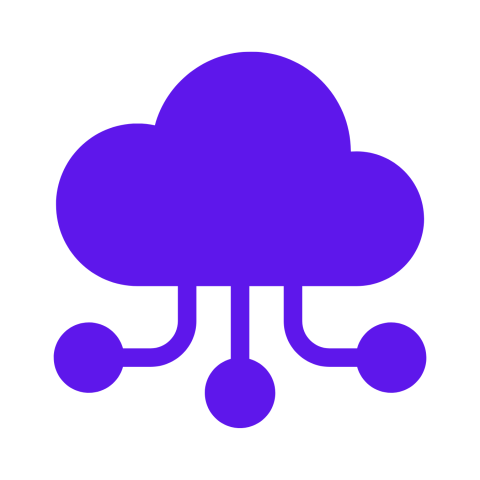Rückschau
Der erste Hackathon "Hack the paradise!" fand am 16. und 17. Juni 2023 statt. Die Jenaer Projekte „Smart City“ und „5G-Verkehrsvernetzung“ hatten zu diesem besonderen Event eingeladen, um innovative Ideen und Lösungsansätze für die Herausforderungen einer Smart City zu fördern.
Über 50 begeisterte Teilnehmer:innen erarbeiten in 6 Teams digitale Lösungen für die Fragestellungen aus den Challenges. Ein weiteres Team widmete sich dem Bau unterschiedlicher Sensoren, wobei der Open Bike Sensor im Mittelpunkt der handwerklich agierenden großen Gruppe stand.
Die Lichtwerkstatt Jena bot als Open Maker Space der Universität den richtigen Rahmen. Beim Abschlusspitch bestimmten eine fachkundige Jury und das begeisterte Publikum die Gewinner:innen der Challenges. Gewonnen hat das Team, das zur Challenge „Sensorik Bodenfeuchte“ eine Gießroutenoptimierung für den Kommunalservice Jena entwickelt hat. Die zweiten Plätze gingen an die Teams, die Lösungsideen zur Messung der Passantenfrequenz in der Innenstadt und zur Visualisierung von Live-Positionsdaten einer Straßenbahn präsentierten.
Wie geht es jetzt weiter?
Hack the paradise! wird weitergeführt! Alle Projekte aus dem Hackathon stehen auf der Themenliste des Smart City Projektes Jena und werden weiter vorangetrieben. Workshops zu ausgewählten Themen sowie Hackathons werden für die gesamte Projektlaufzeit geplant. Die Gruppe der Teilnehmenden aus "Hack the paradise!" wird die Termine als erste erfahren. Alle Informationen und Ankündigungen stehen auf der Website Smart City Jena.
Ergebnisse der Challenges
Bau von Bike Sensoren

Für die Challange lag das Material für 20 Open Bike Sensoren bereit. Über 15 Personen machten sich an die Arbeit, die Sensoren mit Lötkolben und technischem Geschick zu fertigen. Dabei zeigte sich, dass die Aufgabe zeitlich sehr herausfordernd war. So konnten während des Hackathons 4 Open Bike Sensoren fertiggestellt und zwei weitere von den Teilnehmenden in Eigenregie erfolgreich zusammengebaut werden. Für die unvollendeten Sensoren wird den Teilnehmenden der Challenge in Kürze in der Lichtwerkstatt die Weiterbearbeitung ermöglicht. Die Fahrten der Open Bike Sensoren von „Hack the paradise!“ können auf diesem Portal abgerufen werden: portal.obs-jena.de
Qualitätssicherung von Sensordaten

Die Challenge befasste sich mit der Frage, wie die Genauigkeit von Sensormesswerten abgeschätzt und als Qualitätsmerkmal weiterverarbeitet werden kann. Dies ist notwendig, damit aus Echtzeitdaten von zukünftig hunderter Sensoren z. B. für Umwelt- und Wetterdaten, Bodenfeuchte, Verkehr oder Energieverbräuche Schlussfolgerungen gezogen und Vorgänge gesteuert werden können.
Dafür wurden drei Möglichkeiten identifiziert und weiter vertieft:
- die Auswertung der technischen Spezifikationen des Sensors und Möglichkeiten der Automatisierung,
- der Scan der Datenreihe auf Unregelmäßigkeiten und unplausible Verläufe nach bestimmten Kriterien,
- der Vergleich der Datenreihe mit Werten von vertrauenswürdigen, überwachten Sensoren oder mit den Verläufen der „Sensorschwarms“.
Zu allen drei Ansätzen wurden von den Teilnehmenden wertvolle Ideen und teilweise Algorithmen entwickelt. Für die weitere Entwicklung der urbanen Datenplattform sind damit sehr gute Beiträge entstanden.
Sensorik Bodenfeuchte

Die Challenge bot zwei Herausforderungen: Das Team um den Mentor Oliver Mothes, Sofia Moya, Daniel Loos und Raúl Hernández arbeitete sehr kreativ an einer Routenoptimierung für das Bewässerungsmanagement der Stadtgrünpflege sowie an einer Visualisierung von Mikroklimadaten des Stadtforstes. Konkret sollte für die Gießstellen (Stadtbäume) im Stadtgebiet eine Routenoptimierung konzipiert werden, was die Teilnehmenden über das Berechnen von Permutationen lösten. Im Ergebnis wird die kürzeste Route in einer Karte vom Stadtgebiet farblich dargestellt. Für die Mikroklimadaten des Stadtforstes entstand eine Karte, in der jede Messstation einzeln ausgewählt werden kann und für welche die Mikroklimadaten in einem Diagramm angezeigt werden.
Die Ergebnisse können sich sehen lassen: Im Voting der Jury und des Publikums ging das Team als Gewinner hervor! Zukünftig heißt es, diese Ideen weiter voran zu bringen, denn für die Routenoptimierung sollen viele weitere Faktoren in dem Modell betrachtet werden.
Passantenfrequenz

Bei dieser Challenge entwickelte das dreiköpfige Team um den Mentor Lars Hinneburg von der Spleenlab GmbH einen Lösungsansatz basierend auf einem kombinierten Ansatz zum Erfassen von Passantenströmen über das Auslesen von MAC-Adressen mobiler Empfangsgeräte und der videobasierten, KI-gestützten Auswertung von Videoaufnahmen. Über diese Lösung lassen sich günstig, störungsfrei und datenschutzkonform mit Hilfe von Echtzeitdaten Passanten- und Fahrradfrequenzen sowie der Durchgangsverkehr von Anlieferungsfahrzeugen an vordefinierten Orten in der Innenstadt erfassen.
Das Team präsentierte einen ersten Prototypen, der bereits während der Ergebnispräsentation die anwesenden Personen im Raum erfassen konnte. Im Voting der Jury wurden die anschaulichen Ergebnisse mit einem zweiten Platz prämiert! Diese Lösung ist nun weiterzuentwickeln, um sie im städtischen Umfeld zum Einsatz bringen zu können.
Datenvisualisierung ereignisbezogener Daten

Die Challenge forderte die Teilnehmenden auf, einen kreativen Ansatz zur Veranschaulichung großer Mengen an Echtzeitdaten zu finden. Erste Ideen für die Visualisierung von Straßenbahndaten bestanden darin, deren Fahrten auf einer interaktiven Karte in Echtzeit darzustellen, um den Fahrgästen und den Verkehrsbetrieben nützliche Informationen zu liefern.
Diese Lösung basiert auf einem intelligenten Algorithmus, der die Daten der Straßenbahnen erfasst und in Echtzeit verarbeitet. Im ersten Schritt wurden im Stadtplan die Positionen der Straßenbahnen angezeigt, weitere relevante Daten wie Ankunftszeiten, Verspätungen und Umleitungen sollen folgen. Durch die klare Visualisierung können z. B. Fahrgäste ihre Reisen zukünftig besser planen oder der Jenaer Nahverkehr den Verkehrsfluss effizienter überwachen.
Die Ergebnisse wurden über eine benutzerfreundliche Webanwendung durch den Challenge-Teilnehmenden Lazaro Alonso präsentiert. Beeindruckend war dabei die Entwicklung einer innovativen Live-Darstellung von Straßenbahndaten. Im Voting des Publikums wurden diese anschaulichen Ergebnisse mit einem zweiten Platz prämiert!